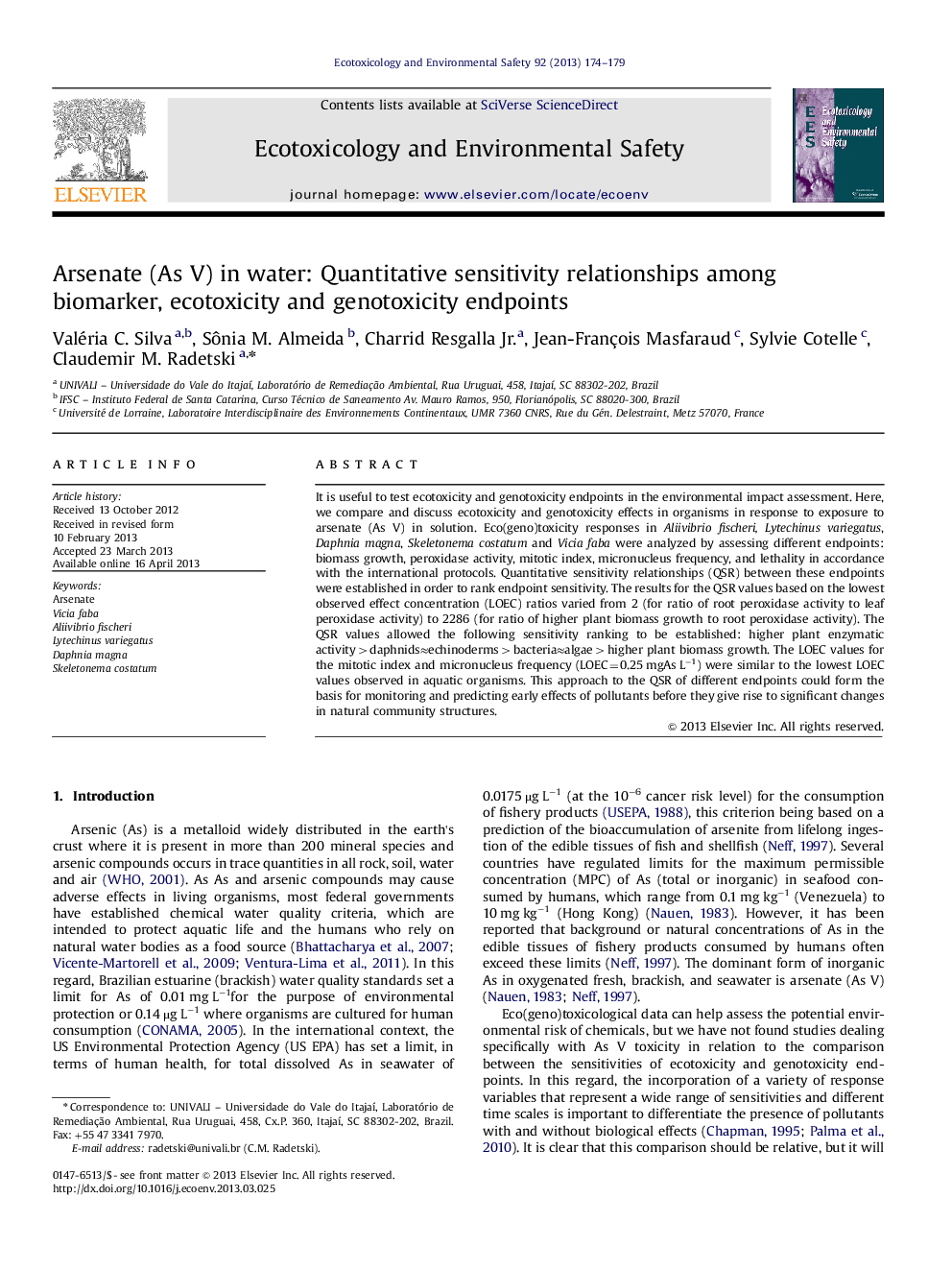| Article ID | Journal | Published Year | Pages | File Type |
|---|---|---|---|---|
| 4420449 | Ecotoxicology and Environmental Safety | 2013 | 6 Pages |
•A battery of biotests was used to evaluate the eco(geno)toxicity of arsenic (V).•A sensitivity ranking of the measured endpoints was determined.•Quantitative sensitivity relationships between measured endpoints were established.•The genotoxicity and ecotoxicity endpoints showed similar sensitivity.
It is useful to test ecotoxicity and genotoxicity endpoints in the environmental impact assessment. Here, we compare and discuss ecotoxicity and genotoxicity effects in organisms in response to exposure to arsenate (As V) in solution. Eco(geno)toxicity responses in Aliivibrio fischeri, Lytechinus variegatus, Daphnia magna, Skeletonema costatum and Vicia faba were analyzed by assessing different endpoints: biomass growth, peroxidase activity, mitotic index, micronucleus frequency, and lethality in accordance with the international protocols. Quantitative sensitivity relationships (QSR) between these endpoints were established in order to rank endpoint sensitivity. The results for the QSR values based on the lowest observed effect concentration (LOEC) ratios varied from 2 (for ratio of root peroxidase activity to leaf peroxidase activity) to 2286 (for ratio of higher plant biomass growth to root peroxidase activity). The QSR values allowed the following sensitivity ranking to be established: higher plant enzymatic activity>daphnids≈echinoderms>bacteria≈algae>higher plant biomass growth. The LOEC values for the mitotic index and micronucleus frequency (LOEC=0.25 mgAs L−1) were similar to the lowest LOEC values observed in aquatic organisms. This approach to the QSR of different endpoints could form the basis for monitoring and predicting early effects of pollutants before they give rise to significant changes in natural community structures.
